A Beginner's Guide to Essential RV Equipment
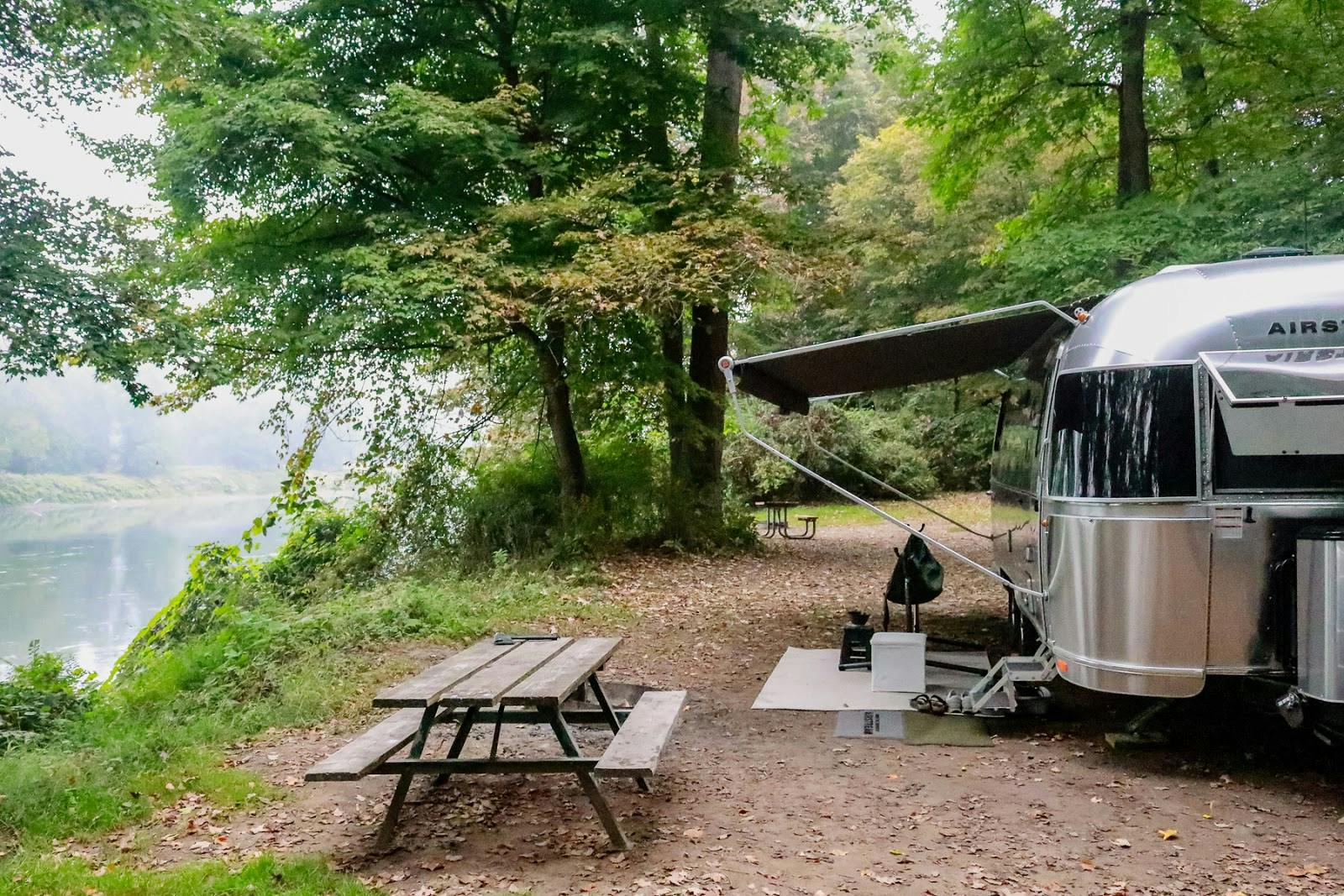
If you are purchasing an RV and aren’t sure what items you need to begin with, don’t fret! These are the essentials you need to get rollin’.
OUTSIDE EQUIPMENT:
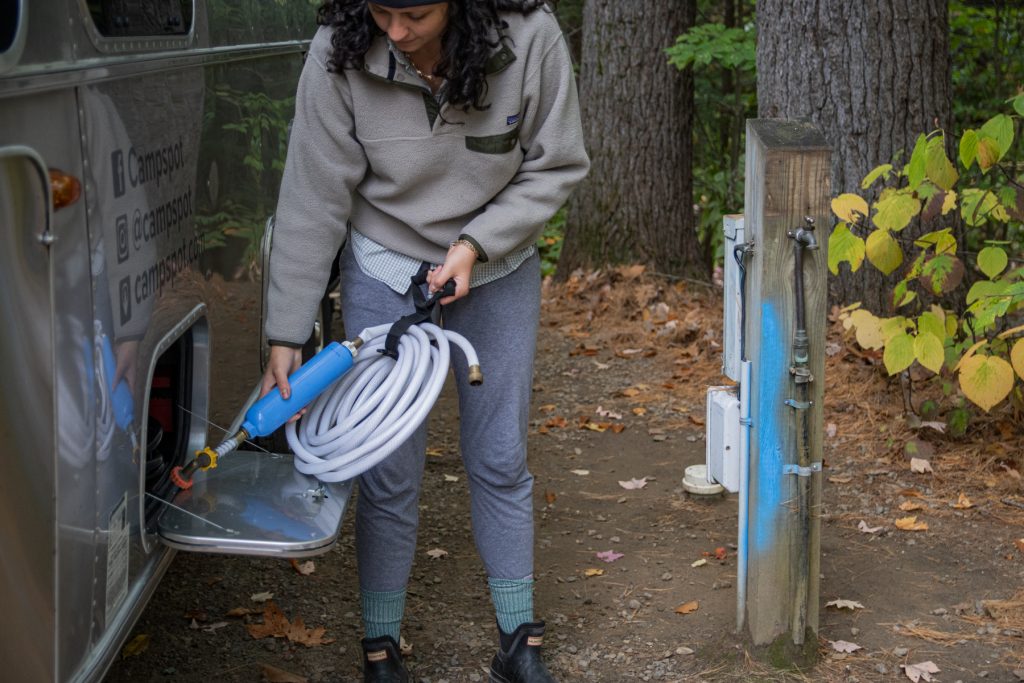
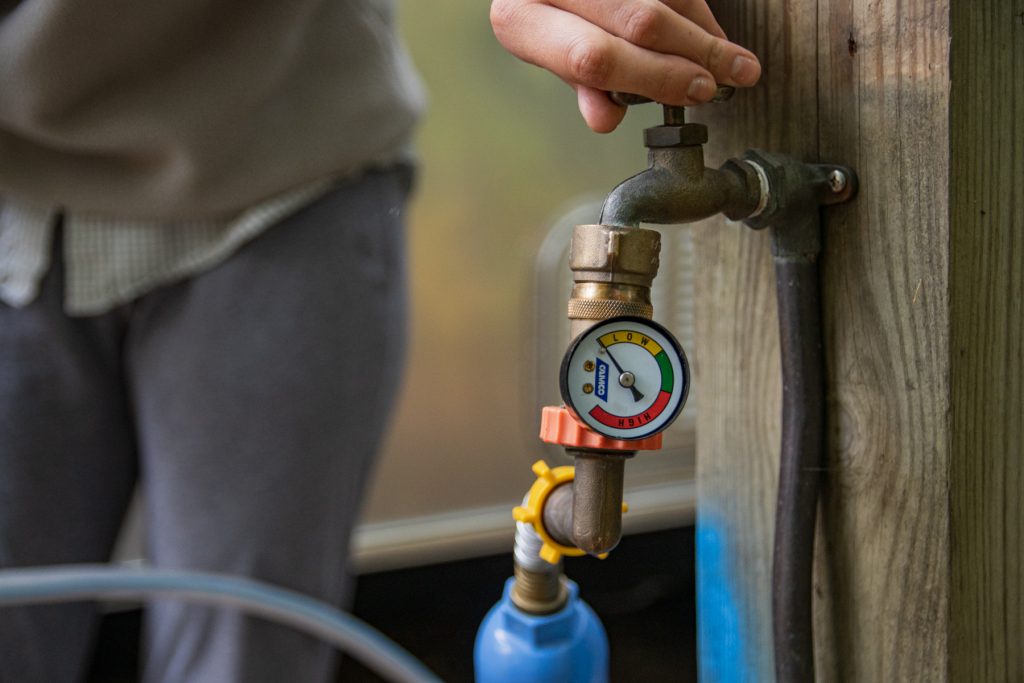
- Freshwater hose– One that is safe for drinking.
- Water pressure regulator– Water pressure fluctuates from campground to campground. A pressure regulator not only helps you get a better flow, but it also keeps your pipes and plumbing from damage by high water pressure.
- Water filter – Connects to your water hose for safer drinking water.
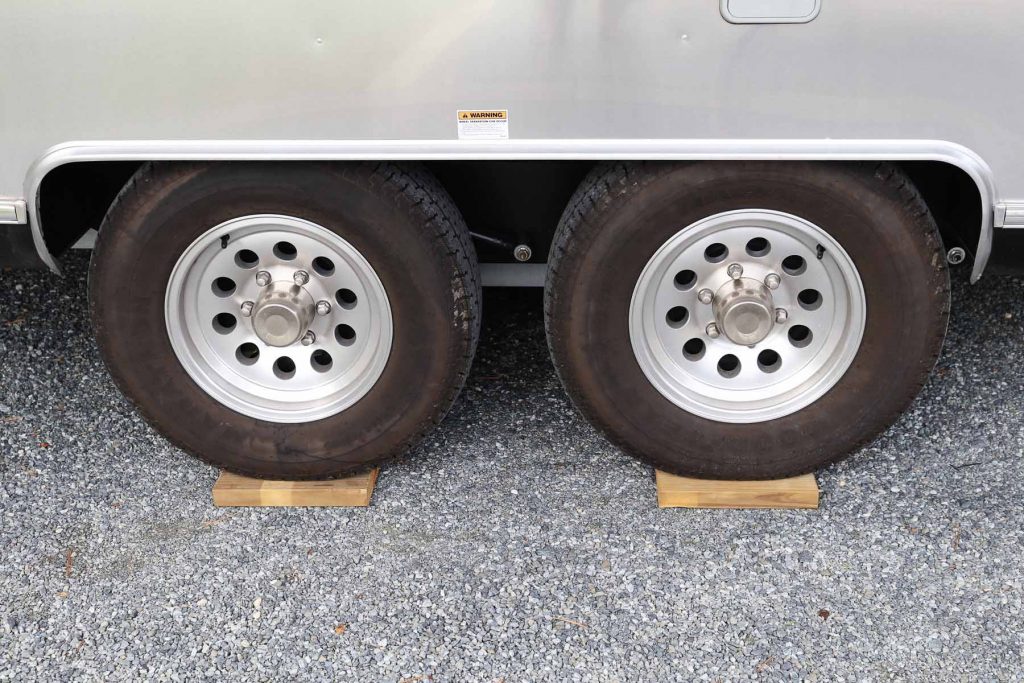
- Leveling blocks– Sometimes a campsite’s ground isn’t level and you need a bit of a lift. Enter leveling blocks. Wooden planks are a good start but plastic stackable leveling blocks give you more of a precise lift.
- Level– Most newer rigs have them built into their jack, but we would advise getting a larger, more intricate one to ensure you’re level.
- Wrench – some people use a power drill but good old fashion wrench will work to put down your stabilizers.

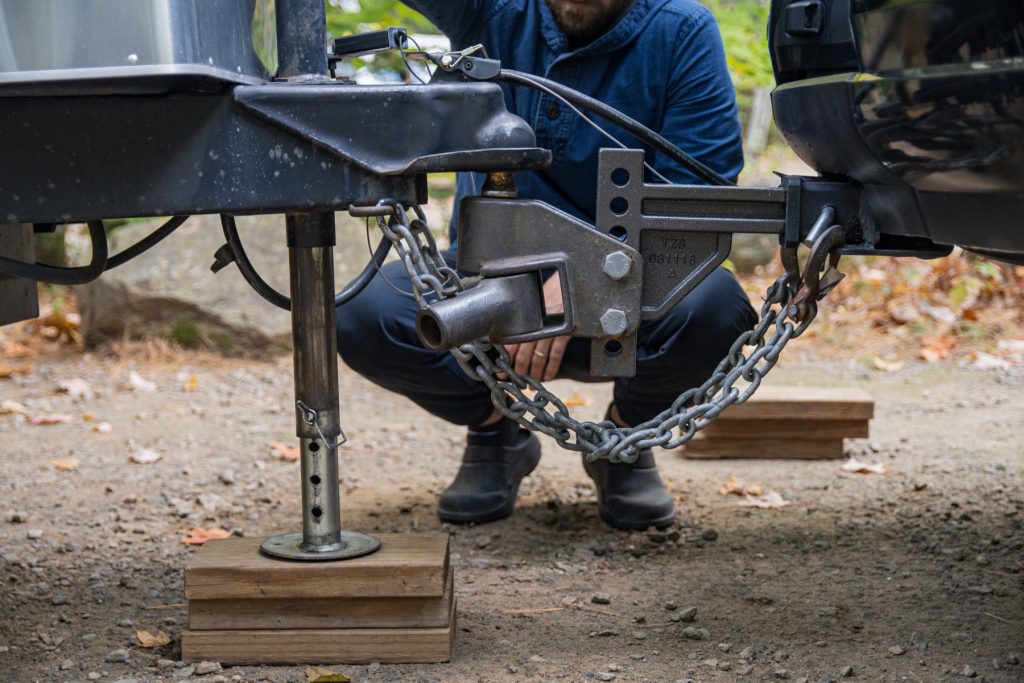
- Jack pad– This is to prevent your trailer’s tongue jack from sinking into the ground or damaging the pavement. A cheaper alternative is wooden boards used as a jack pad.
- Basic toolkit. This speaks for itself.
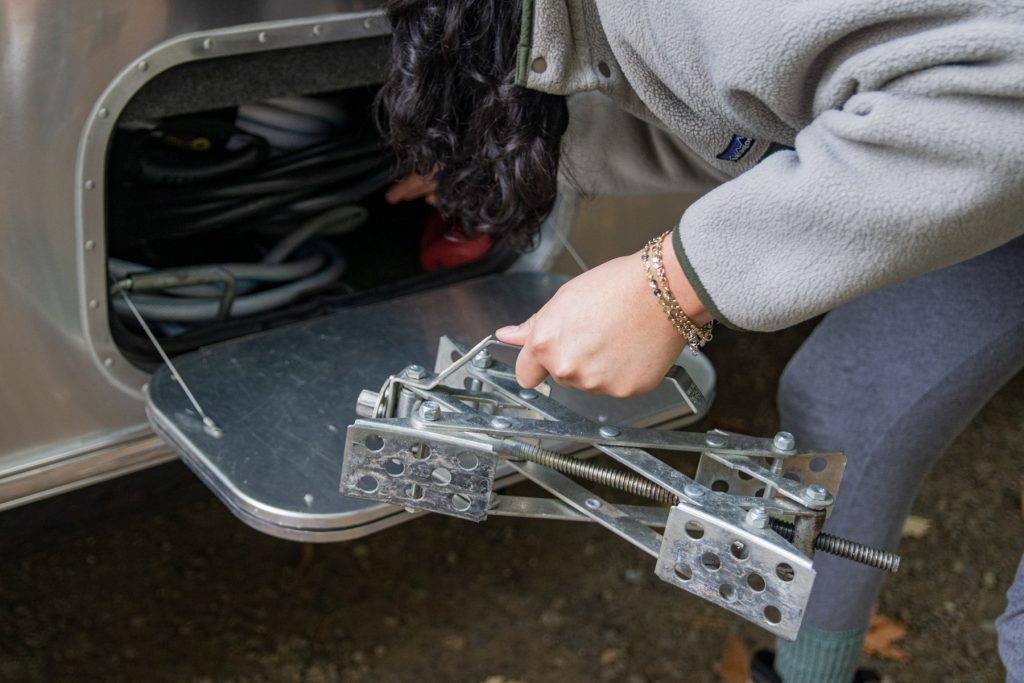

- Tire chocks- These lock up your tires to help prevent the rig from rockin’ and lock up the vehicle’s tires. If you do not have chocks, putting blocks of wood behind and in front of your tires gives you some safety as well as absorbs some of the movement, acting like a tire chock.
- Surge protector– Similar to how you use a surge protector to protect valuable items like televisions or computers from being damaged, you’ll need to protect your RV from power dips and spikes.

- Sewer hose– This should be the hose and connector. Some people like clear connectors so that they can see when the water becomes clear when flushing out their tanks.
- Holding-tank treatment– Greywater is your water waste from sinks or the shower. Black water is your sewage water from your toilet. You will need holding-tank chemicals that break down your solids. The process worries many new RVers but once you get a good pair of gloves and dump a few times, you realize the routine is rather simple.
- RV-use or quick-dissolving toilet paper– To avoid clumps and clogs and to allow the holding-tank chemicals to do the job, choose RV-friendly toilet paper that, yes, unfortunately, is thinner.
- Folding step stool– This will come in handy. Whether you need a leg up while putting up or down the awning or a seat to rest on while you are putting the tire chocks in, this is incredibly handy.
- Flashlight- Maybe you have to go outside to check on something in the middle of the night, or perhaps you arrive at the campground after the sunset, bring a flashlight. A headlamp is another option for hiking and setting up your campsite at night.
- Sewer hose– This should be the hose and connector. Some people like clear connectors so that they can see when the water becomes clear when flushing out their tanks.

- Sewage Hose Support- This ensures that your water and sewage flows downward in case of uneven terrain.
- Holding-tank treatment– Greywater is your water waste from sinks or the shower. Black water is your sewage water from your toilet. You will need holding-tank chemicals that break down your solids. The process worries many new RVers but once you get a good pair of gloves and dump a few times, you realize the routine is rather simple.
- RV-use or quick-dissolving toilet paper– To avoid clumps and clogs and to allow the holding-tank chemicals to do the job, choose RV-friendly toilet paper that, yes, unfortunately, is thinner.
- Folding step stool– This will come in handy. Whether you need a leg up while putting up or down the awning or a seat to rest on while you are putting the tire chocks in, this is incredibly handy.
- Flashlight- Maybe you have to go outside to check on something in the middle of the night, or perhaps you arrive at the campground after the sunset, bring a flashlight. A headlamp is another option for hiking and setting up your campsite at night.

INSIDE ITEMS
Many inside items you can “borrow” from your home, like your cleaning supplies or blankets. Another cost-effective and environmentally friendly way to stock up on things like cooking utensils or plates is by shopping second hand.
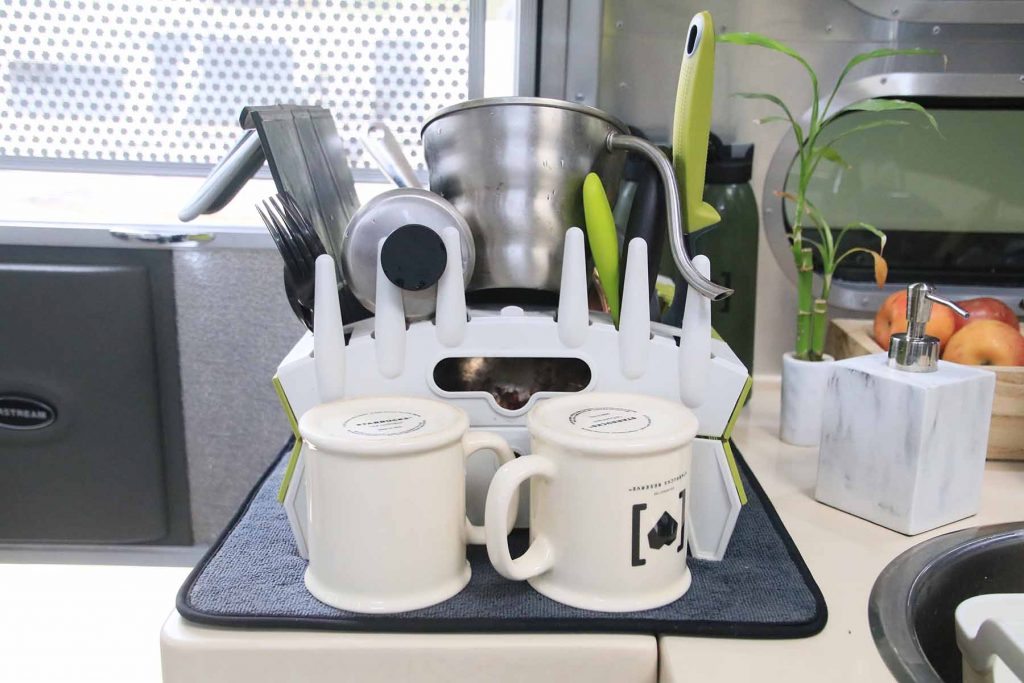
- Plates & silverware– Please don’t use single-use plastic plates and utensils. Some people in RVs use disposable items such as these and toss them in the trash to avoid clean up. With no dishwasher, it’s tempting, but it’s also tremendously wasteful. There are a variety of easy-to-clean, durable, and light-weight plate options to choose from like enamel or melamine plates.
- Cleaning supplies– Sponge, hand and dish soap, surface cleaner, rags, bathroom/shower cleaner.

- Cooking items– A couple pots and pans, necessary cooking utensils, french press for coffee, etc.
- Towels– A few hand towels for the kitchen and bathroom, bath towels, and beach towels. Even if you’re not by the beach, you might find the extra towels handy in case you get stuck in the rain or need an impromptu picnic blanket.
- Bathroom items– The great thing about RVs, especially those that have the amenities of a full bath, is that you can do your regular bathroom routine. Welcome to not roughing it.

- Bedroom items– Pillows, pillowcases, sheets, blanket. Even if it’s in the summer, pack the blanket. Sleeping with the windows open can allow it to get chilly quickly, and it’s always easier to take off the blanket than not having the option at all.

- Campfire items– Depending on where you’re staying, some campgrounds have campfire pits, and you should definitely take advantage of that and come prepared. It’s a camping must! Purchase wood at the campground office or store or ask where you can by the wood nearby. Use local wood. Do not bring your wood into a new area and risk spreading any invasive pests. Bring a long lighter and a firestarter if you need a little help. Relax, there is no shame in firestarters. Some people will bring fire tongs to turn logs, but if you’re careful, you can use a fire poker or a grilling tool just fine.

- Champing chairs– Opt for the lighter-weight and transportable options in case you need to catch the sunset along the water or have an impromptu picnic.
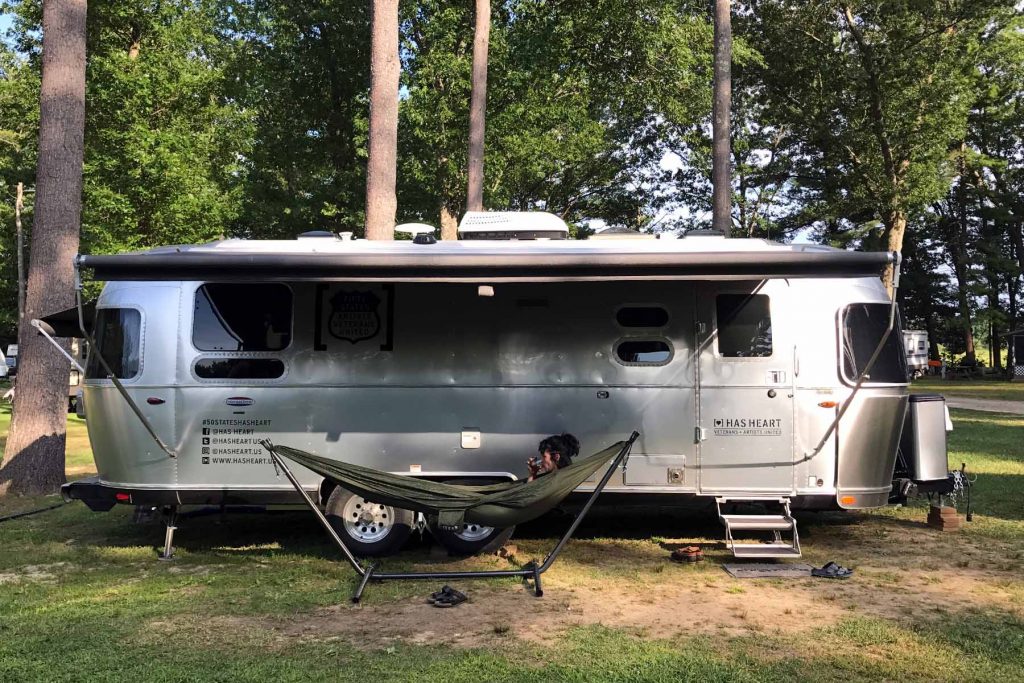
Like most things, the best guide is experience. If you ever feel confused or want a suggestion, reach out to your campground neighbors. Everyone was once a beginner. Soon enough, you’ll be helping others around you!